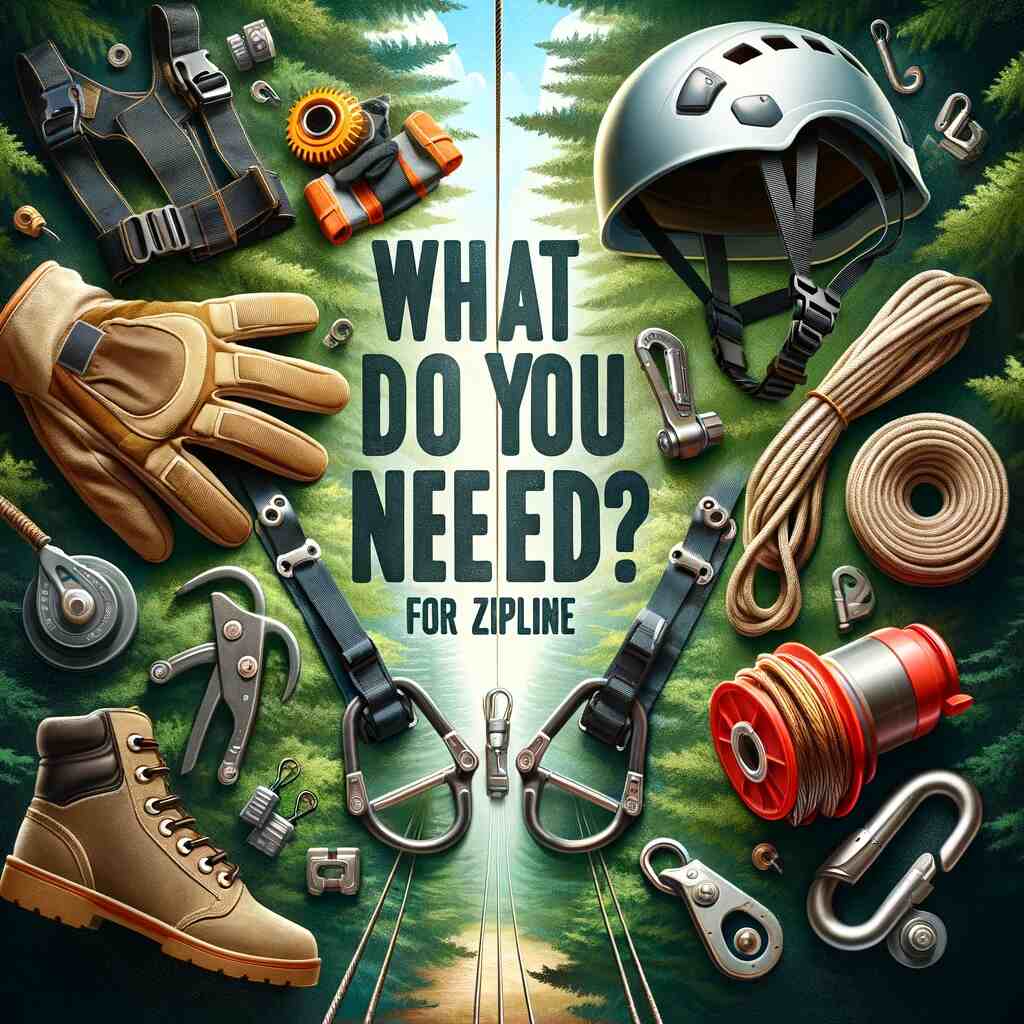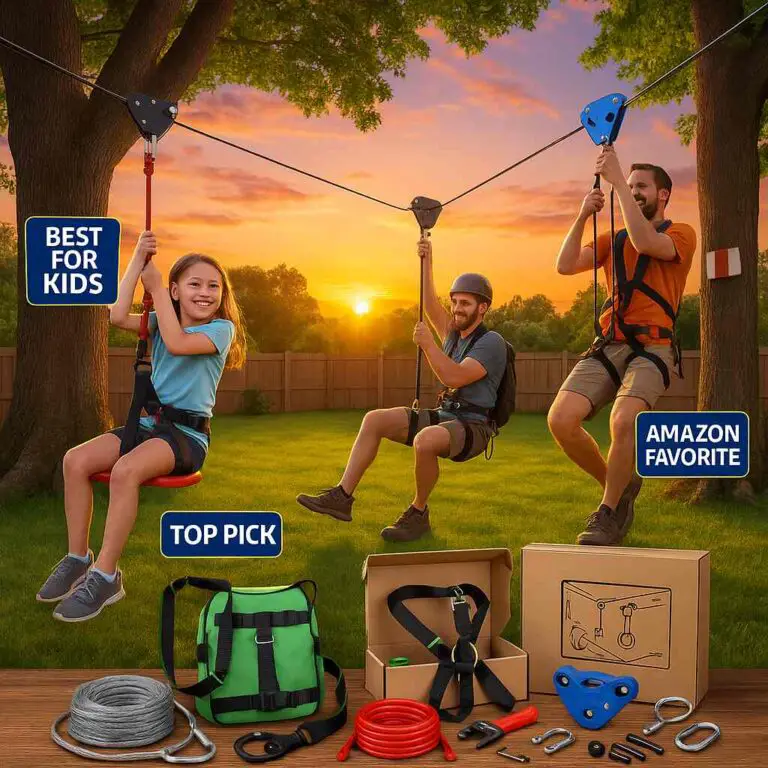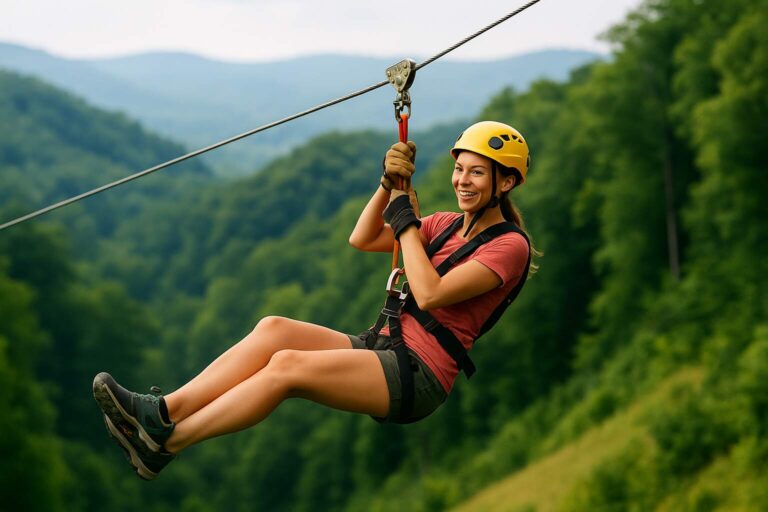Ziplining is an exhilarating outdoor adventure that allows you to soar through the treetops, taking in breathtaking views and experiencing a rush of adrenaline. Whether you’re planning to visit a zipline park or set up your own backyard zipline, it’s essential to have the right gear and be adequately prepared to ensure a safe and enjoyable experience. Let’s explore the essential gear and preparation you need for a zipline adventure.
Understanding Ziplining
Before delving into the gear and preparation, let’s first understand what ziplining is and what makes it such an exciting outdoor activity.
What Is Ziplining?
Ziplining is an adventure sport that involves sliding along a suspended cable from one point to another, typically at a high elevation. It allows participants to experience the sensation of flying, as they glide through the air while securely harnessed. Ziplines can vary in length and height, offering a wide range of experiences, from a leisurely glide through a forest canopy to an adrenaline-pumping descent over a deep gorge.
The Appeal of Ziplining
Ziplining appeals to a wide range of people for several reasons:
- Adventure and Thrills: Ziplining offers an adrenaline rush that many thrill-seekers crave. The feeling of soaring through the air is both exhilarating and unforgettable.
- Scenic Views: Zipline courses are often located in picturesque natural settings, providing participants with breathtaking views of landscapes, forests, canyons, and more.
- Accessibility: Ziplining can be enjoyed by people of various ages and physical fitness levels, making it a family-friendly activity.
- Unique Perspective: It allows you to experience the environment from a unique perspective, as you glide above the treetops or across a scenic landscape.
Now that we have a better understanding of what ziplining entails and why it’s so appealing, let’s dive into the essential gear and preparation required for a safe and enjoyable ziplining experience.
Essential Gear for Ziplining
When it comes to ziplining, having the right gear is crucial for your safety and enjoyment. Here is a list of the essential gear you need:
1. Helmet
Safety should always be your top priority when ziplining. A well-fitted helmet is essential to protect your head in case of any unforeseen accidents or collisions. Make sure your helmet is certified for outdoor activities and fits snugly without being too tight.
2. Harness
A harness is the primary piece of equipment that keeps you securely attached to the zipline cable. It wraps around your waist and thighs and connects to the trolley (the device that glides along the cable). Make sure the harness is properly adjusted and fastened to ensure a comfortable and secure fit.
3. Trolley
The trolley is the component that attaches to the zipline cable and allows you to slide along it. It’s essential to choose a trolley that is designed for the specific zipline you’ll be using. Some trolleys have built-in braking systems for added safety and control.
4. Gloves
Ziplining can generate friction on the cable, which may cause your hands to get hot or develop blisters. Wearing protective gloves can help prevent this discomfort. Look for gloves with a good grip to enhance your control while ziplining.
5. Closed-Toe Footwear
Wearing closed-toe shoes or hiking boots is essential to protect your feet during take-off and landing. Avoid open-toe shoes, sandals, or flip-flops, as they do not provide adequate foot protection.
6. Comfortable Clothing
Wear comfortable clothing appropriate for the weather conditions. Avoid loose-fitting clothing that could get caught in the harness or trolley. Long pants are generally recommended to prevent friction and chafing.
7. Sunscreen and Bug Spray
If your ziplining adventure takes place in an outdoor setting, don’t forget to apply sunscreen to protect your skin from harmful UV rays. Additionally, if you’re in an area with insects, insect repellent can help keep bugs at bay.
8. Water and Snacks
Staying hydrated is important during physical activities, so be sure to bring water to drink between ziplines. Pack some light snacks to keep your energy levels up throughout the experience.
9. Camera or GoPro
To capture the incredible views and memories, consider bringing a camera or GoPro with a secure attachment. Make sure it won’t interfere with your safety gear or obstruct your view while ziplining.
10. First Aid Kit
While ziplining is generally safe when done correctly, accidents can happen. Having a basic first aid kit on hand can be a lifesaver in case of minor injuries or accidents.
11. Reservations and Tickets
If you’re visiting a zipline park or course, it’s essential to make reservations in advance and purchase tickets. This ensures that you have a scheduled time slot and that there’s availability for your group.
Now that you’re equipped with the necessary gear, let’s move on to the preparation and safety measures you need to consider before ziplining.
Ziplining Preparation and Safety
Ziplining can be a thrilling experience, but it’s crucial to be adequately prepared and follow safety guidelines to minimize risks. Here’s what you need to know before you take the leap:
1. Choose a Reputable Zipline Operator or Location
If you’re planning to go ziplining at a commercial facility, research and choose a reputable operator or location. Read reviews, check their safety record, and ensure they comply with industry standards and regulations.
2. Listen to the Safety Briefing
Before embarking on your ziplining adventure, you’ll receive a safety briefing from trained staff. Pay close attention to the instructions and ask questions if anything is unclear. This briefing typically covers harnessing, trolley operation, braking techniques, and emergency procedures.
3. Follow Weight and Age Restrictions
Zipline operators often have weight and age restrictions to ensure the safety of participants. Adhere to these restrictions to prevent accidents and ensure the zipline equipment functions correctly.
4. Check the Weather
Weather conditions can significantly impact the safety and enjoyment of your ziplining experience. High winds, thunderstorms, and heavy rain can pose risks, so check the weather forecast before your scheduled adventure. Ziplining may be postponed or rescheduled if conditions are unfavorable.
5. Secure All Loose Items
Before taking off, make sure all loose items, such as cameras, phones, and accessories, are securely stowed. These items can become hazards if they fall during your zipline ride.
6. Observe Proper Body Positioning
During your zipline ride, maintain the correct body position. Keep your feet up and your body parallel to the ground. This posture helps reduce air resistance and allows you to glide smoothly.
7. Use Proper Braking Techniques
Learn and practice the proper braking techniques taught during the safety briefing. Depending on the zipline, you may need to use your gloved hand to slow down or come to a stop. Avoid using your body or feet to brake, as this can lead to injuries.
8. Respect Wildlife and the Environment
If your ziplining adventure takes place in a natural setting, be mindful of the environment and wildlife. Avoid making loud noises or disturbing the ecosystem. Respect the rules and guidelines provided by the zipline operator.
9. Stay Calm and Enjoy the Ride
Ziplining can be nerve-wracking, especially for first-timers. Try to stay calm and enjoy the experience. Trust in the safety measures and equipment provided, and focus on the incredible views and the sensation of flying.
10. Listen to Your Guides
If you’re ziplining with a group, pay attention to your guides and follow their instructions. They are experienced professionals who are there to ensure your safety and provide guidance throughout the adventure.
DIY Backyard Ziplining
While commercial zipline parks and courses offer a controlled and supervised environment, some adventurous individuals may want to create their own zipline experience in their backyard. If you’re considering DIY backyard ziplining, here’s what you need to know:
1. Assess Your Space
Before setting up a backyard zipline, carefully assess your space. Ensure you have enough distance between two sturdy anchor points (e.g., trees) to create a safe zipline route. Measure the distance accurately to determine the cable length you’ll need.
2. Gather the Necessary Materials
You’ll need the following materials to set up a backyard zipline:
- Zipline cable and trolley
- Anchors (e.g., trees or poles)
- Harness and helmet
- Carabiners and pulleys
- Brake system (optional but recommended)
- Tools for installation (e.g., wrenches, pliers, and drill)
3. Safety First
Safety is paramount, even in a DIY backyard zipline setup. Make sure you have the appropriate safety gear, including a helmet and harness. Additionally, follow safety guidelines and best practices for installation.
4. Follow Installation Instructions
The zipline equipment you purchase will come with installation instructions. Follow these instructions carefully to ensure the cable is securely anchored, and the trolley functions correctly. If you’re unsure about any aspect of the installation, seek guidance from a professional.
5. Regular Maintenance
Once your backyard zipline is set up, perform regular maintenance checks to ensure all components are in good condition. Check for wear and tear on the cable, harness, and trolley. Replace any damaged or worn parts promptly.
6. Supervision
If children or inexperienced individuals will be using the zipline, provide proper supervision and instruction. Ensure that they understand the safety rules and procedures before allowing them to use the zipline.
7. Use Caution
While DIY ziplines can be a fun addition to your backyard, they come with inherent risks. Use caution and common sense when operating the zipline, and never allow reckless behavior.
Ziplining: Tips for a Memorable Experience
To make the most of your ziplining adventure, here are some additional tips:
1. Arrive Early
Arriving early at the zipline location or your backyard setup gives you ample time to complete paperwork, get fitted for gear, and mentally prepare for the experience.
2. Capture Memories
Bring a camera or GoPro to document your ziplining journey. Many operators allow you to attach cameras to your helmet or harness, providing a unique perspective of your ride.
3. Stay Hydrated
Ziplining can be physically demanding, so remember to stay hydrated throughout your adventure. Drink water between rides to keep your energy levels up.
4. Respect Other Participants
Be considerate of other participants and wait your turn patiently. Avoid pushing or rushing, as this can lead to accidents or injuries.
5. Ask Questions
If you have any questions or concerns about the ziplining experience, don’t hesitate to ask the staff or guides. They are there to assist and ensure your safety and enjoyment.
6. Enjoy the Scenery
Ziplining provides a unique opportunity to take in breathtaking views. Take a moment to appreciate the natural beauty around you as you glide through the air.
7. Overcome Fear
If you’re feeling nervous or scared before your zipline ride, remember that it’s perfectly normal. Embrace the fear and use it to enhance the thrill of the experience.
8. Share the Experience
Ziplining can be a fantastic bonding activity for friends and family. Share the experience with loved ones to create lasting memories together.
Conclusion
Ziplining is a thrilling adventure that offers a unique perspective of the world from above. To ensure a safe and enjoyable experience, it’s essential to have the right gear, follow safety guidelines, and prepare adequately. Whether you’re visiting a zipline park or setting up your own DIY backyard zipline, prioritize safety, and make the most of this exciting outdoor activity.
So, gear up, prepare, and get ready to soar through the treetops on your next ziplining adventure!








